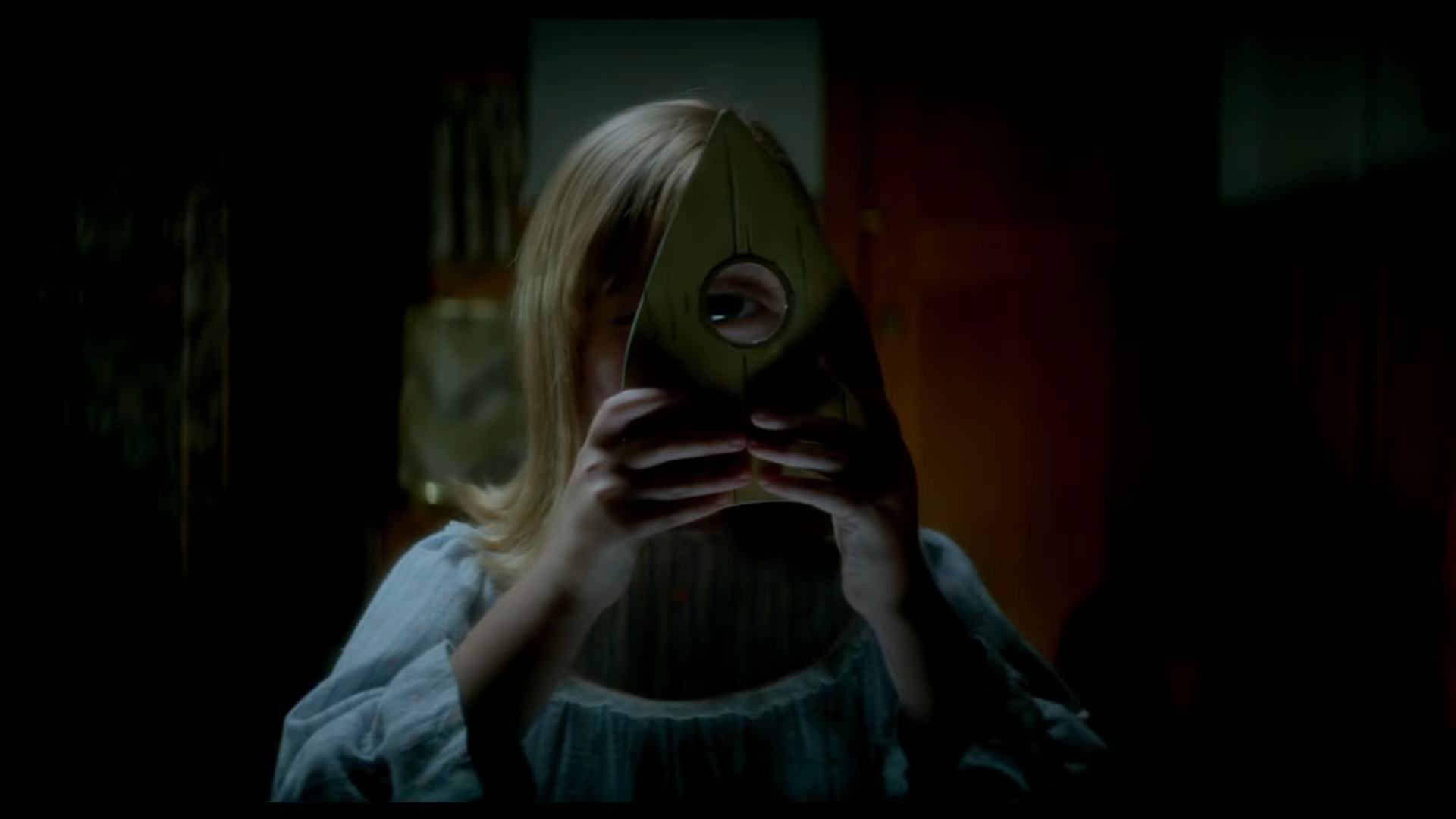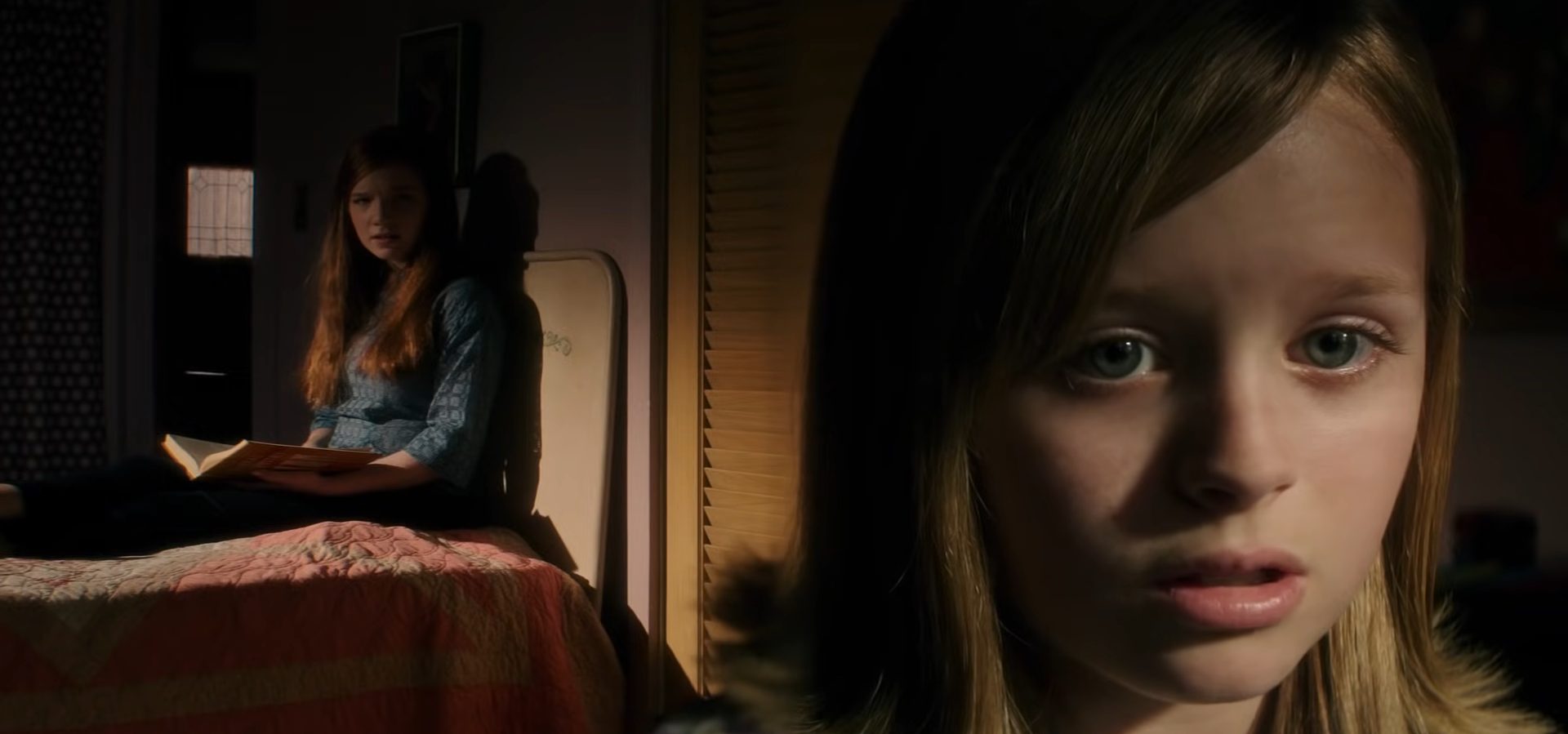Acclaimed director Mike Flanagan reared the 2016 horror thriller movie ‘Ouija: Origin of Evil’ with a unique and visionary approach. The story probes into the lives of Alice Zander, a single mother, and her two daughters, Lina and Doris. Working as a spiritual medium, Alice helps people communicate with their near and dear ones, who have passed on to the otherworldly realm.
However, she unwittingly evokes demonic spirits in the process, putting her family in jeopardy. Following its release, the movie attracted the attention of fans and critics, thanks to its stellar cast ensemble and enticing period feel. However, you may wonder whether the film holds any resemblance to a real-life haunting. In that case, let us probe deeper.
Is Ouija Origin of Evil Based on A True Story?
No, ‘Ouija: Origin of Evil’ is not based on a true story. However, the director created quite an enticing ambiance by employing era-appropriate techniques. In effect, the film looks as if it was filmed in the 1970s. The movie reads like a prequel to the 2014 movie ‘Ouija,’ a commercial success globally. However, its critical reception was far from sensational, and thus, producer Jason Blum wanted the follow-up to be strikingly different than the original. Director Mike Flanagan, who was vocally opposed to the idea of sequels, sought to work on a horror film that would double as an era film and a family drama, which matched Blum’s vision of the prequel.

They toyed with the idea of making it a standalone movie with little to no references to the original, but Flanagan himself wanted to leave subtle references to entice the franchise fans. Mike Flanagan wrote the script, teaming up with Jeff Howard. The latter previously collaborated with Flanagan on ‘Before I Wake’ and ‘Oculus.’ They worked with more or less the same characters created by Juliet Snowden and Stiles White for the first film. Cinematically, Flanagan’s inspiration for the period feel of the movie were classics like ‘The Changeling’ (1980), ‘The Exorcist,’ and ‘The Watcher in the Woods.’
These timeless horror movies gave Flanagan and the team the idea of using only technology that would have existed in the 1970s. That way, the period feel of the film would feel authentic. He used techniques like scene fades, archaic lenses, and the camera zooms instead of Steadicams to authenticate the period ambiance. While the movie was framed digitally, Flanagan used many simulated techniques in the post-production, as he also assumed the role of the editor. He further employed techniques like reel jumps, dusty negatives, subtle warping of the audio tracks, and the famous “cigarette burns” or changeover cues.
The cigarette burns refer to the circular spots that appear at the upper right corner of the frames every 20 minutes, indicating the change of reels. In the era of digitization, these marks have become obsolete, but in the olden days, a reel would capture only about 20 minutes’ worth of footage. Flanagan further opted to use the Universal Pictures 1963-90 logo by Universal Title and Optical for MCA Inc. in the opening moments to reinforce the retro feel. Moreover, as filmed with an anamorphic lens, the movie would ideally get an aspect ratio of 2.66:1. However, Flanagan seemingly left no stones unturned to achieve the retro ambiance, cropping down the ratio to 1.85:1.
The movie’s name derives from the talking board of the same name, which is a trademark of US-based toymaker Hasbro. Etymologically, the creator seemingly mingled “oui” and “ja” — standing for “yes” in French and German, respectively — to come up with the name. However, the term is assigned to any such talking board or spirit board. The “automatic” writing technology (colloquially “fuji” or planchette writing) used in the Ouija board can be traced back to the scriptures of the Song Dynasty of 1100 AD China. Then, the use of talking boards was forbidden by the Qing rulers, only to commercially resurface halfway around the world more than 700 years later.
Reports about spiritualists from their Ohio camps establishing faster connections with spirits using the device surfaced in 1886. On July 1, 1890, Baltimore-based businessman Elijah Bond commercially introduced the board to the broader public, and he is often credited with inventing the board. Curiously, if you pause a scene and look at the bottom left corner of the Ouija board cover, you will see “Baltimore MD.” Therefore, while the movie seems fictional, the director stayed true to his art, making the portrayal realistic with thorough research and innovative techniques.
Read More: Where Was Ouija Origin of Evil Filmed?


You must be logged in to post a comment.